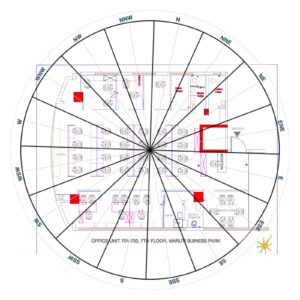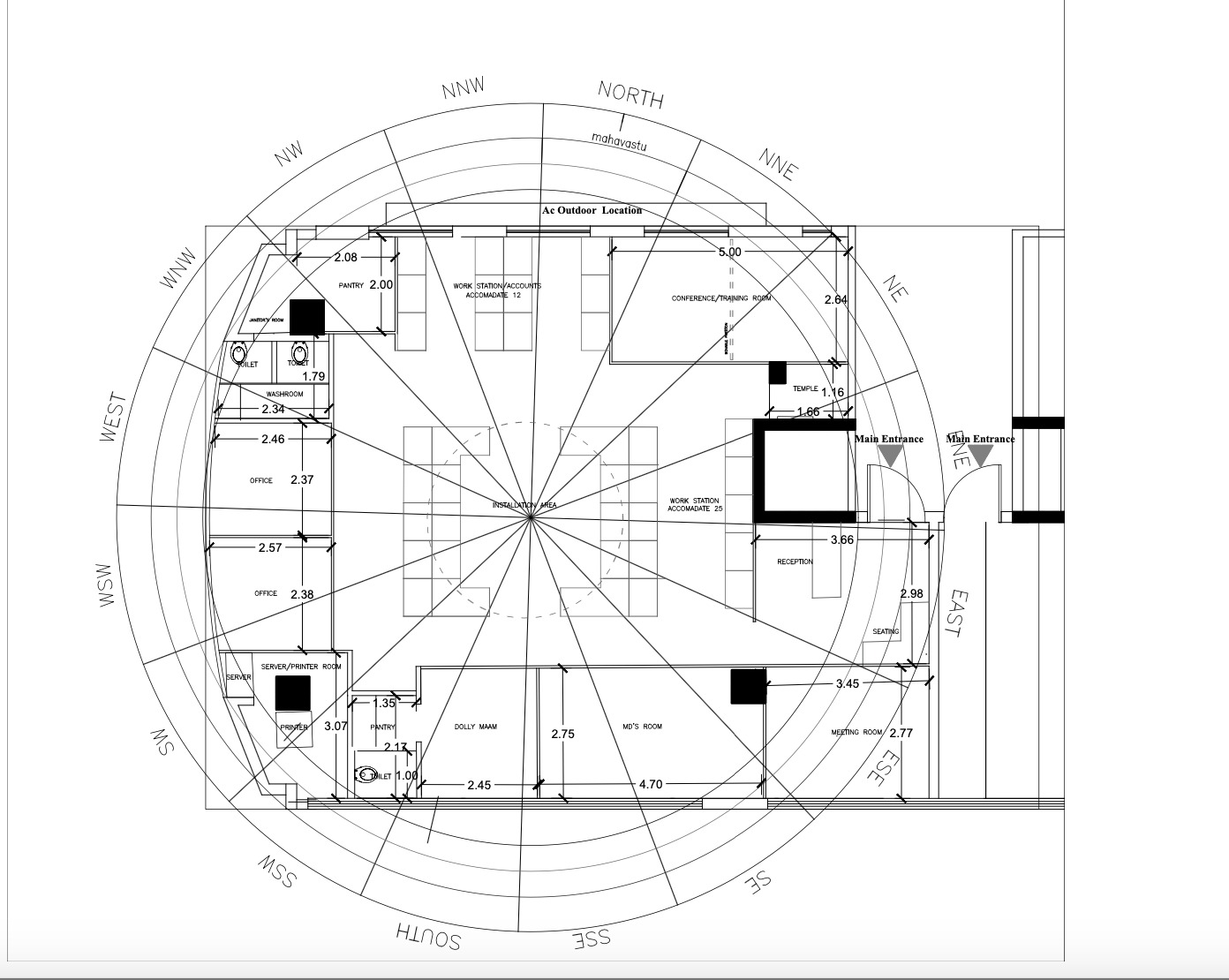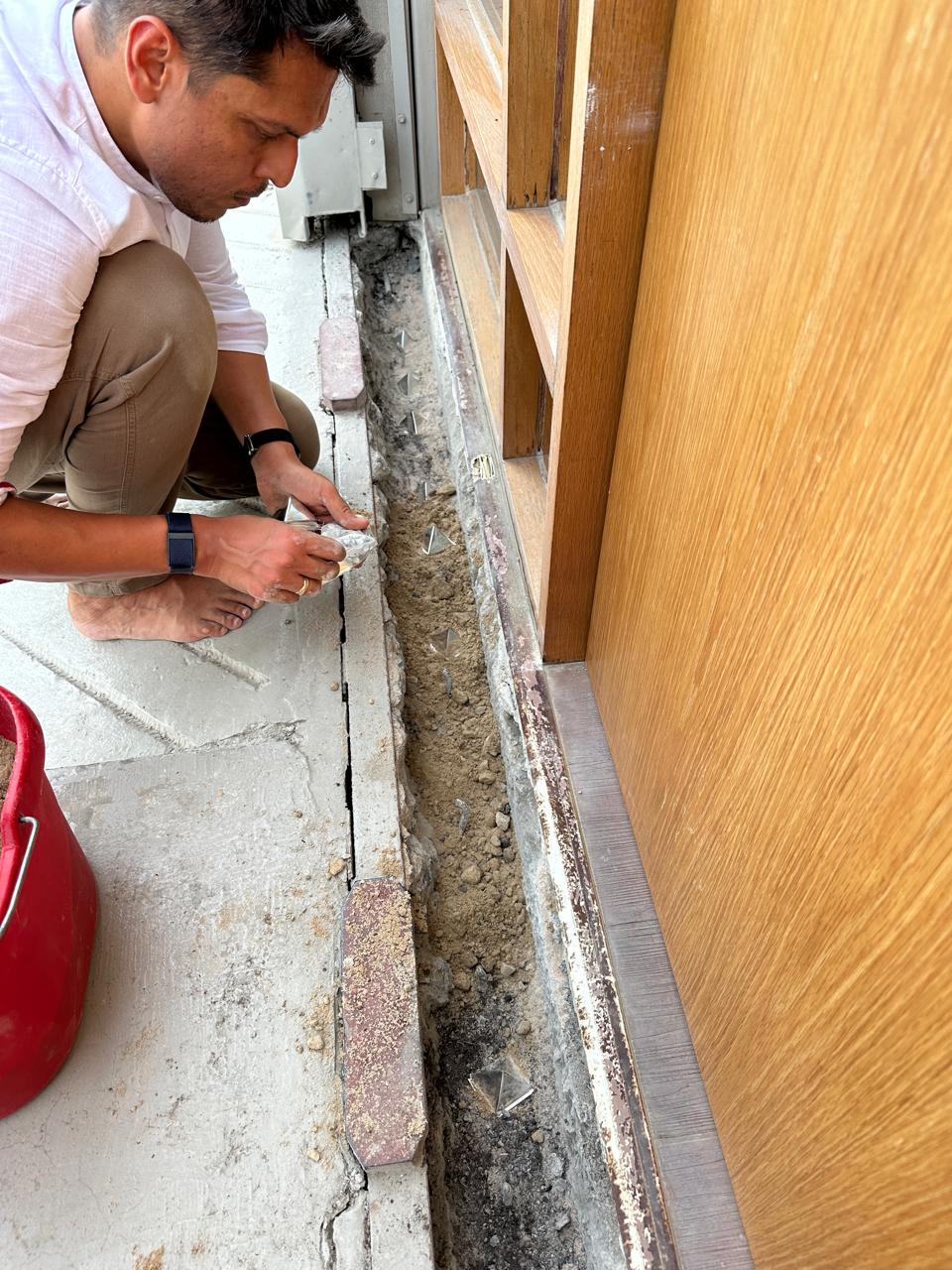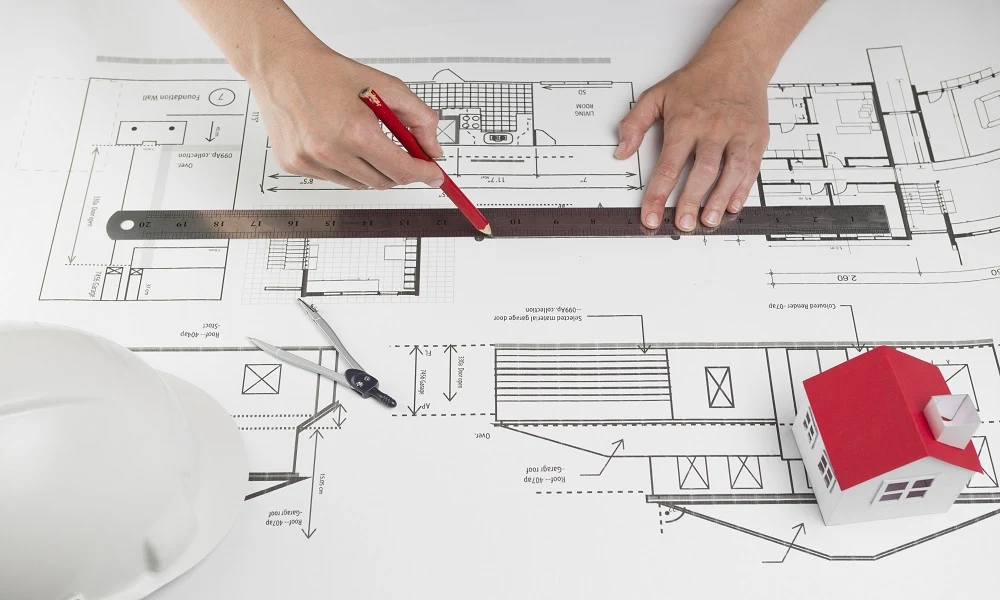
A Case Study of Zener Maritime’s Mumbai Office
Every office carries its own rhythm. In some spaces, energy flows effortlessly, while in others, it feel a little “stuck.” Over the years, I’ve seen how the smallest spatial misalignments can affect decision-making, teamwork, and even the overall performance of a company.
When Zener Maritime, a leading shipping conglomerate in Mumbai, approached us, they weren’t just looking for a redesign. They wanted to bring balance back into their workspace. The leadership sensed something was off. That’s where our journey with Vastu began.
Step One: Understanding the Space
The first thing we noticed was the toilets and pantry placed in the Northeast (Ishan) corner, i.e. a zone that, in Vastu Shastra, represents clarity, wisdom, and vision. When spaces of purity and inspiration are used for heavier functions like toilets or kitchen utilities, the energy becomes muddled.
Another concern was the Brahmasthan, the central core of the office. It had been occupied with heavy desks and equipment, blocking the natural flow of energy. In Vastu, this center must remain open; it’s like the heart of the body.
Step Two: Rebalancing Energy Through Design
We began by realigning the Northeast by moving the toilets and pantry out of that area and relocating them to the Northwest, which is the most suitable direction for such utilities. The newly opened Northeast zone was transformed into a temple and conference hall that invite vision, clarity, and calm collaboration.
Next, we redefined the Brahmasthan. All heavy furniture was removed, restoring openness at the core. The employee seating also needed attention. We reorganized the layout so that employees now face north or east, directions that naturally encourage focus and positivity.
Step Three: The Leadership Zone
In every corporate headquarters, the leadership area plays a defining role. For Zener Maritime, the Managing Director’s cabin was positioned in the Southwest which is the direction of stability, control, and strength. This placement ensures grounded leadership and strategic clarity.
The Impact
After the realignment, the change in the office was clear. Employees reported feeling more comfortable and less fatigued. The overall communication improved. Meetings flowed smoother, and the leadership noticed a renewed sense of clarity in operations.
Final Reflections
Every space has a story, and sometimes it just needs to be retold the right way. The transformation of Zener Maritime’s Mumbai office is a reminder that Vastu isn’t about superstition but about understanding. When you see how space influences energy, and how energy shapes behavior, everything changes- from the way people think to the way they lead.
Vastu for Corporate Offices | Zener Maritime Mumbai Case Study | Vedasrivastu










